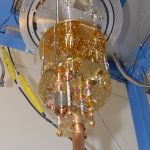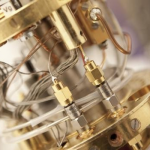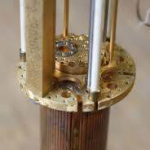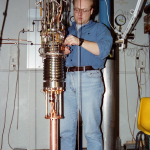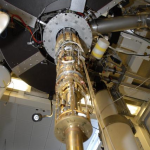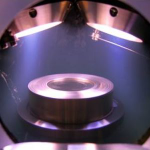

Selected Publications
- Photon Transport in a Bose-Hubbard Chain of Superconducting Artificial Atoms
G. P. Fedorov et al., Phys. Rev. Lett. 126, 180503 (2021) - Path-Dependent Supercooling of the
He3 Superfluid A-B Transition
Dmytro Lotnyk et al., Phys. Rev. Lett. 126, 215301 (2021) - Superconductivity in an extreme strange metal
D. H. Nguyen et al., Nat Commun 12, 4341 (2021) - High-Q Silicon Nitride Drum Resonators Strongly Coupled to Gates
Xin Zhou et al., Nano Lett. 21, 5738-5744 (2021) - Measurement of the 229Th isomer energy with a magnetic micro-calorimeter
T. Sikorsky et al., Phys. Rev. Lett. 125 (2020) 142503
Ferromagnetic resonance in epsilon-Co magnetic composites
K. Chalapat, J.V.I. Timonen, M. Huuppola, L. Koponen, C. Johans, R.H.A. Ras, O. Ikkala, M.A. Oksanen, E. Seppala, G.S. ParaoanuWe investigate the electromagnetic properties of assemblies of nanoscale epsilon-cobalt crystals with size range between 5 to 35 nm, embedded in a polystyrene matrix, at microwave (1-12 GHz) frequencies. We investigate the samples by transmission electron microscopy imaging, demonstrating that the particles aggregate and form chains and clusters. By using a broadband coaxial-line method, we extract the magnetic permeability in the frequency range from 1 to 12 GHz, and we study the shift of the ferromagnetic resonance (FMR) with respect to an externally applied magnetic field. We find that the zero-magnetic field ferromagnetic resonant peak shifts towards higher frequencies at finite magnetic fields, and the magnitude of complex permeability is reduced. At fields larger than 2.5 kOe the resonant frequency changes linearly with the applied magnetic field, demonstrating the transition to a state in which the nanoparticles become dynamically decoupled. In this regime, the particles inside clusters can be treated as non-interacting, and the peak position can be predicted from Kittel's FMR theory for non-interacting uniaxial spherical particles combined with the Landau-Lifshitz-Gilbert equation. In contrast, at low magnetic fields this magnetic order breaks down and the resonant frequency in zero magnetic field reaches a saturation value reflecting the interparticle interactions as resulting from aggregation. Our results show that the electromagnetic properties of these composite materials can be tuned by external magnetic fields and by changes in the aggregation structure.
nanotechnology 25 48
doi: 10.1088/0957-4484/25/48/485707


